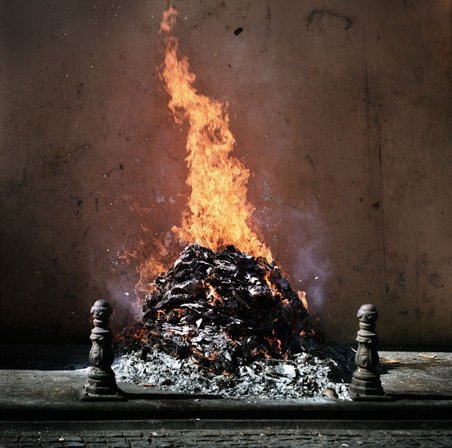Divercity
dal 16/9/2010 al 6/11/2010
Segnalato da
Can Altay
Osman Bozkurt
Ergin Cavusoglu
Deniz Gul
Emre Huner
Ceren Oykut
Didem Ozbek
Bas Princen
Tayfun Serttas
Solmaz Shahbazi
Ali Taptık
Kaja Pawelek
Serra Ozhan
16/9/2010
Divercity
Centre for Contemporary Art, Warsaw
Learning from Istanbul

Video, installation, photography
Artists:
Can Altay, Osman Bozkurt, Ergin Çavuşoğlu, Deniz Gül, Emre Hüner, Ceren Oykut, Didem Özbek, Bas Princen, Tayfun Serttaş, Solmaz Shahbazi, Ali Taptık
Curators: Kaja Pawełek and Serra Özhan
Exhibition architecture: Jakub Szczęsny / Project Group Centrala
Emre Hüner’s video Total Realm is presented during the exhibition on the screen VideoBoard
on Sezam shopping centre at the corner Świętokrzyska and Marszałkowska Streets, daily at 7
p.m. and at 8 p.m.
In the public space in the City of Warsaw are exposed posters by Ceren Oykut.
Exhibition is accompanied by a series of lectures presented by art and urbanism theoreticians
from Istanbul: Orhan Esen: 28th September (Tuesday), 7 p.m., Pelin Derviş: 11th October
(Monday), 7 p.m., and Max Cegielski.
Publication of the OBIEG magazine special edition will appear in the end of September 2010.
The exhibition Diverçity. Learning from Istanbul takes the city as a resource of fictive narratives,
private (hi)stories, dreams and desires, still in the process of recreations, and speculations.
Here, polyphony and fragmentation make one unable to grasp the city in a fixed formula,
because, as the exhibition claims, urban and architectural potential is continuously re-
constructed by negotiations, by individually-organized temporary systems, by the local
adaptations and phenomena of the everyday practices in which innumerous strategies of
survival (mostly considered as informal) are created.
Beyond any strict urban planning or architectural perspectives, the intension was more to give
voice to the inner and more personal artists’ observations and intuitions. What results are the
tiny pieces of reality and fiction, recognized, combined, transformed and retold.
Fictive narrations, based upon a long tradition of story telling allow to reveal different, often
marginal or hidden, images and voices. That is why a lot of diverse voices can be heard – those
of monologues of the inhabitants of a collapsed city district; dialogues of the people brought by
daily coincidence to the microcosm of a small grocery; girl questioning and playing with the new
rituals of consumerism; photographer’s testimony, who recalls desire of self-staging.
Small gestures and rituals can generate distinctive city locations, which contribute to the vast
mechanism of the city, like informal ‘republics’, characterised by alternative visual or
performative codes. They create its intensity on the very street level, in the form of spectacle of
everyday life shortcuts, ad hoc relations, and coincidental occurrences like quotidian
performances.
Contemporary city speeds up, so that the historical architectural layer of the past, taken for
granted, becomes somehow a materialized phantom. It returns however, in the internal,
individual encounters, memories and phantasies. If we go beyond the economy-based
categories such as growth, expansion, or modernisation, what images and stories could be
revealed when one imagines the city’s future – and its future inhabitants? The horizon ahead
seems less and less predictable, balancing between rising hopes and dystopian disillusions, and
the future begins imperceptibly now and can go beyond with our imagination. For some of the
artists ‘Imagined now’ goes thousand years ahead in the drawing projections or is documented
in the images of the city’s outskirts, where
the city expands its borders and changes its shape, shifting from the mass scale to micro scale.
The exhibition spatial setting by Kuba Szczęsny sets areas of high density and open space, by
aiming to condense the relations between the art works and the public and to create separated
and fragmented intimate perspectives. It suggests chaos resulting from the meeting of different
ways of organizing the city, in which the former rules of development are being erased by the
new established ones. The effect is intended to be a structure which makes the viewer engage
in the search of one’s logic of visiting or rather winding through the rooms. In this context both
the space and public would experiment with this potentiality, listen and hear what is hidden
behind. Same as the city itself the exhibition can be performed in that sense. It will be an
exhaustingly nice walk through the districts of a foreign city.
KAJA PAWEŁEK & SERRA ÖZHAN
Image: Ali Taptık, for Cityscale
Press contact:
Zofia Chojnacka tel./fax +48 22 625 05 22 e-mail: biuroprasowe@csw.art.pl
Exhibition opening: Friday, 17th September, 6.00 p.m.
Centre for Contemporary Art Ujazdowski Castle
ul. Jazdów 2, 00-467 Warsaw, Poland
Galleries open everyday except for Mondays from 12 pm to 7 pm
Fridays from 12 pm to 9 pm
Last visitors admitted one half hour before galleries close.



